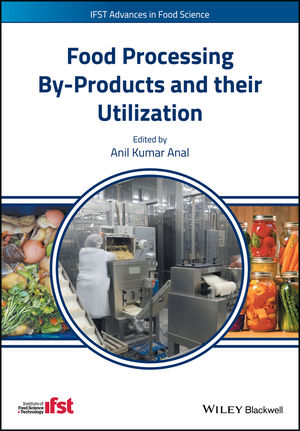The meat and poultry industry is constantly challenged by the balance of fostering a safe yet productive work atmosphere during production. In particular, during the first-processing stage, cutting equipment such as pneumatic cutters and automatic slicers can be a key focus of worker-safety and ergonomic programs, as well as efficiency improvements, cost reductions, proper manning and increased chain speeds.
“Regular upright band saws are being phased out in larger processing facilities,” notes Paul McCauley, director of operations, Mountain States Rosen, Bronx, N.Y. “Hand knife cutting and trimming has been dramatically reduced in daily operations as well.”
Instead, pneumatic trimmers and automatic slicers offer increased efficiencies while minimizing risk today, he says.
More manufacturers are certainly offering precision cutting equipment then were years ago. And they can offer a wide variety of units with capabilities ranging from cutting specific thickness to portion control, says McCauley.
However, with high-speed cutting equipment, certain flexibilities can be lost during the first-processing stage, explains Dennis Stiffler, Ph.D., CEO, Mountain States Rosen.
“Animal to animal variation — or size variability — can create issues; certain equipment may tear product more than conventional methods, such as clean-and-jerk systems; possibly foreign object material issues could arise, and there may be increased inherent personnel safety concerns,” he says.
The lamb industry, for one, is handling safety issues by utilizing cutting equipment that provides improved precision capabilities and accurate data capture and reporting, as well as easier maintenance and sanitation, says Stiffler. McCauley adds that any time an employee is involved with any type of fabrication equipment, there are risks.
“We try and minimize the risk level through a lock-out, tag-out program and constant training,” says McCauley. “Concentration and fatigue are two of the largest factors when manning any cutting equipment.”
In addition, proper hand protection for employees, such as safety cut gloves, is necessary to minimize accidents. Many equipment companies realize that proper training is necessary to ensure a successful program, so they include training sessions with the equipment, says McCauley.
“Operator safety has always been a priority, but there is an elevated level of thought process being built into machines today,” he says. “The addition of more safety cut-off points in the operation of unit has increased.”
In today’s climate, all equipment manufacturers are aware and making concentrated efforts to ensure equipment contributes and complies with good food-safety requirements, instead of primarily focusing on increasing unit capabilities and throughput.
“Today with so much more emphasis being put on food safety, they have no choice but to offer additional precautions built into the unit,” says McCauley. “Adding input and output conveyors minimizes actual food contact, which reduces the possibility of contamination. Many of the newer models are also being built with full wash-down capabilities.”
However, self-sanitizing knives and better bone-dust control are two features McCauley would like to see improved.
Running the gamut: From band saws to lasers
To create its custom orders, Wasatch Meats, Salt Lake City, mainly uses band saws and knives. According to Roger Rausch, operations manager, Wasatch Meats, the inherent risk associated with band saws involves operator error.
“With any piece of equipment, training plays a key role,” he says. “We provide a lot of training to our meat cutters. Their operation of the equipment is vital and key.”
Larger beef operations are using laser-guided and computer-driven cutting equipment, says Dale Woerner, Ph.D., assistant professor, Department of Animal Sciences, Colorado State University, based in Fort Collins, Colo.
“Foodservice has driven portion-control cuts to a high rate of speed,” he says, noting that food safety could be improved if equipment was continually sanitized during and after operations.
The poultry industry’s cutting equipment is also highly automated due to the sheer volume of birds that are processed every day — up to 200,000 to one million per plant.
“Most innovations relate to speeding up the processing lines,” says Gary McMurray, chief, Georgia Tech Research Institute’s Food Processing Technology Division, in Atlanta. “Companies are also pushing software solutions that will collect more data from the machines on key performance indicators.”
After the live hang method is first used on the birds, and up until the bird comes out of the processing line, the bird is not touched by a person, he notes. Then, the bird is re-loaded by employees into production lines where the claws are cut off, and the bird is eviscerated and sent to the chiller.
“There is a little bit of error introduced into the system because of bird weight differences and when operators set the blades,” he says.
Tyson Foods works with suppliers to develop site-specific equipment that builds upon previous innovations, says Worth Sparkman, manager public relations, Tyson Foods Inc., in Springdale, Ark.
“One opportunity we are beginning to make headway in is applying technologies that quantify sharpness in knives and scissors,” he says. “This helps us stabilize performance in the sharpening room, as well as identify team members on the line who need assistance in mastering online maintenance skills.”
Tyson Foods has active ergonomics committees in all of its plants that systematically review jobs and develop corrective solutions to make work easier for its people. Another helpful tactic employed by Tyson is continual education and training of its team members.
“Also, our industrial engineering team analyzes the work content of our jobs using standard motion time libraries, which are ultimately used to establish staffing levels,” says Sparkman. “This data has fatigue allowances built in to ensure we provide our people with adequate rest and recovery time.”
At the end of the day, a good working environment leads to even greater food safety.
“Safe equipment used properly can reduce fatigue and strain, and therefore team members are better able to focus on the immediate task at hand,” he says.









